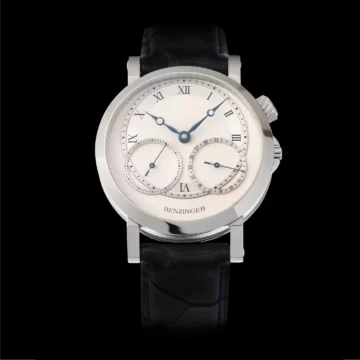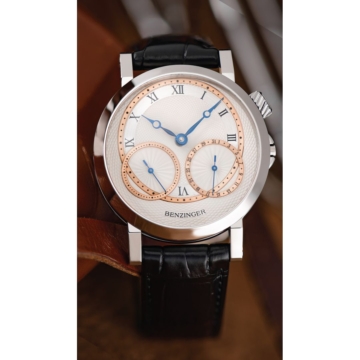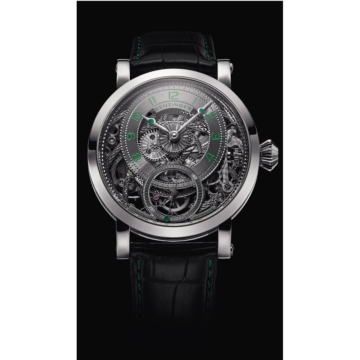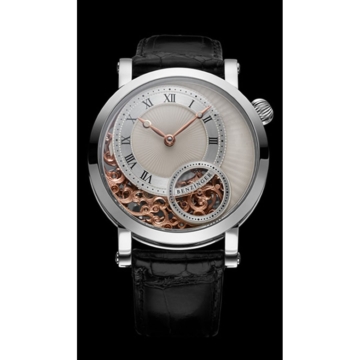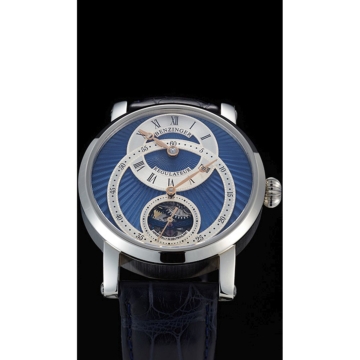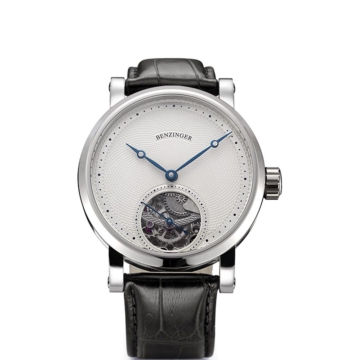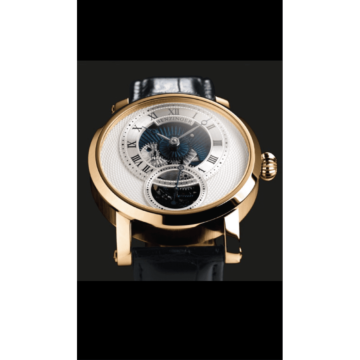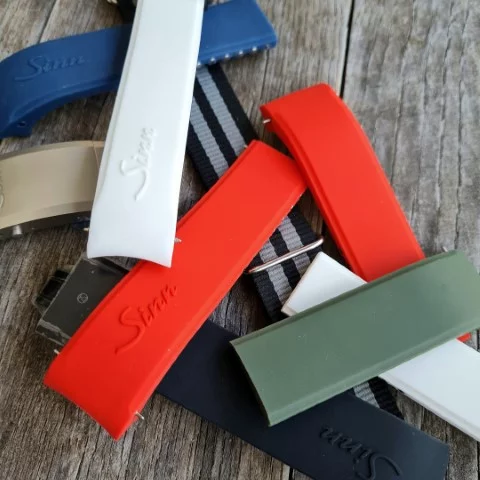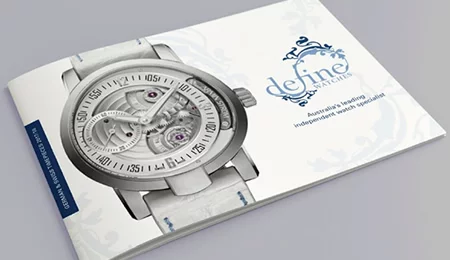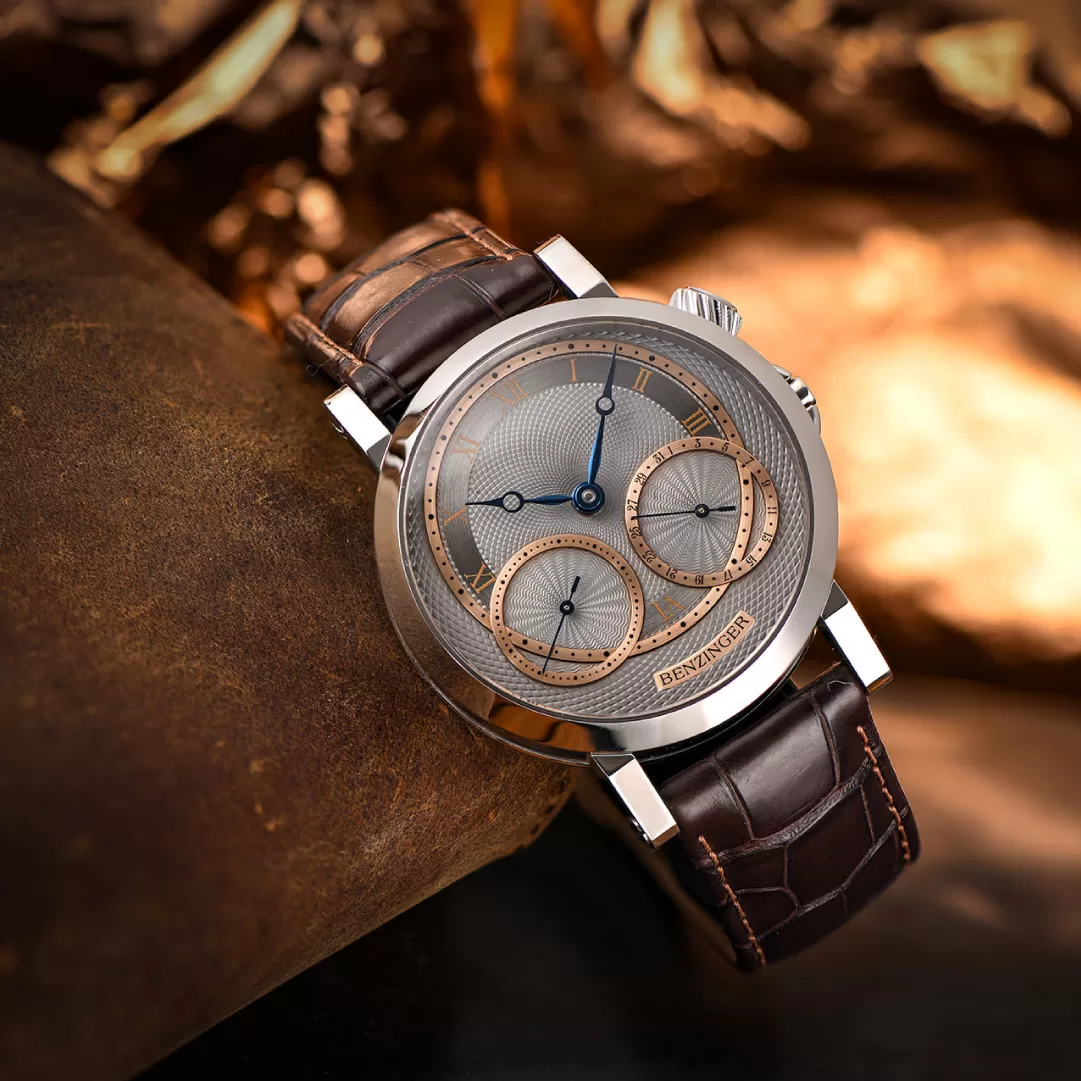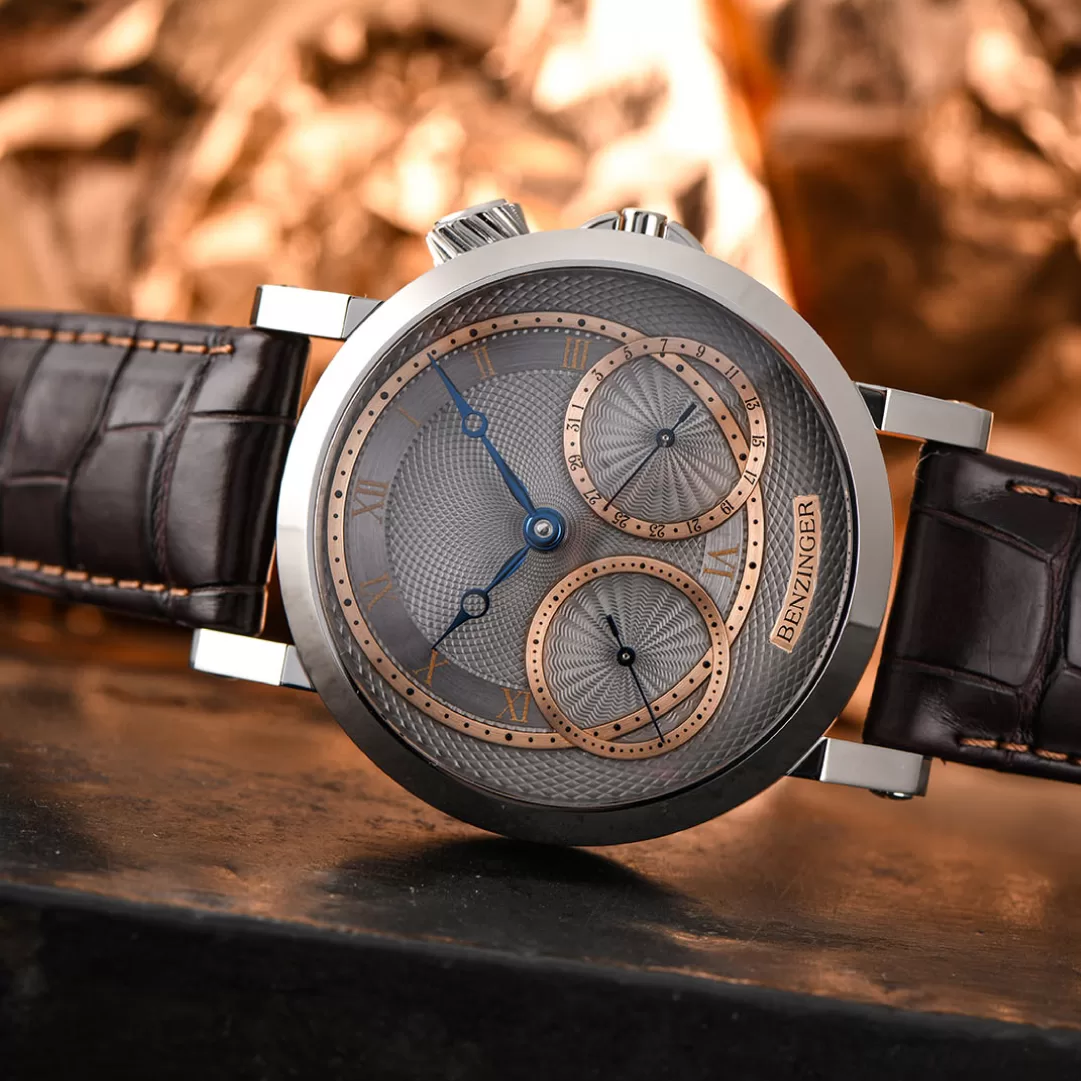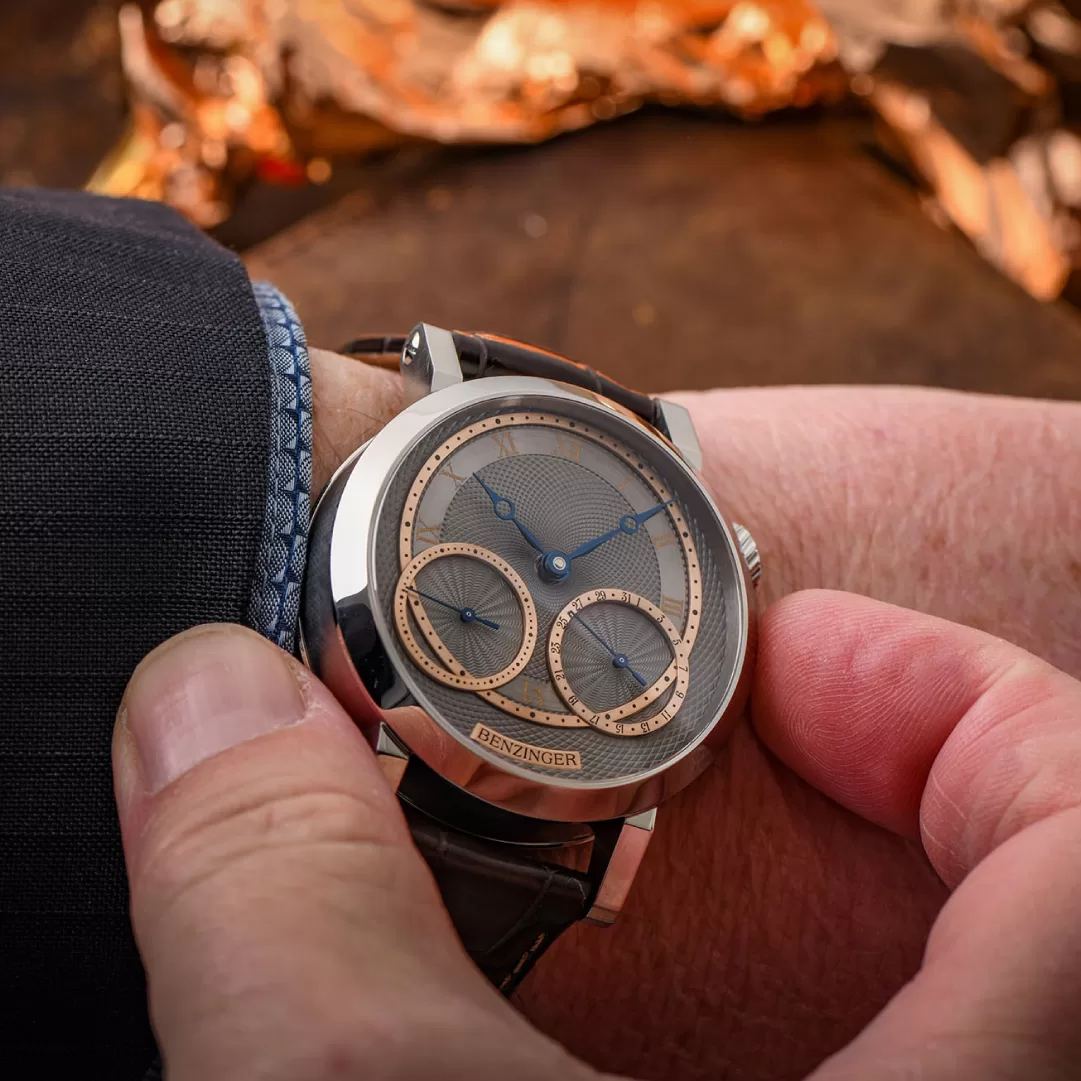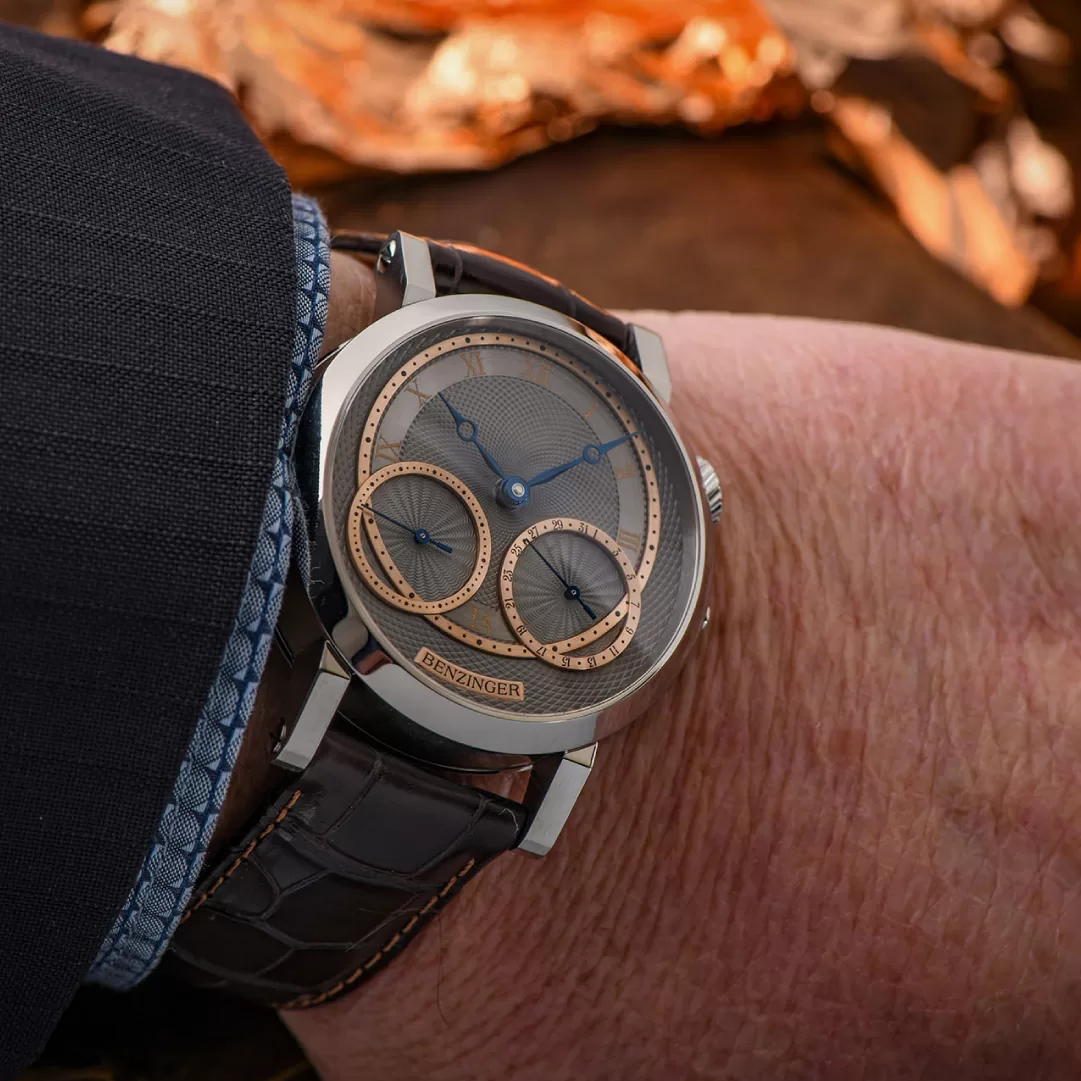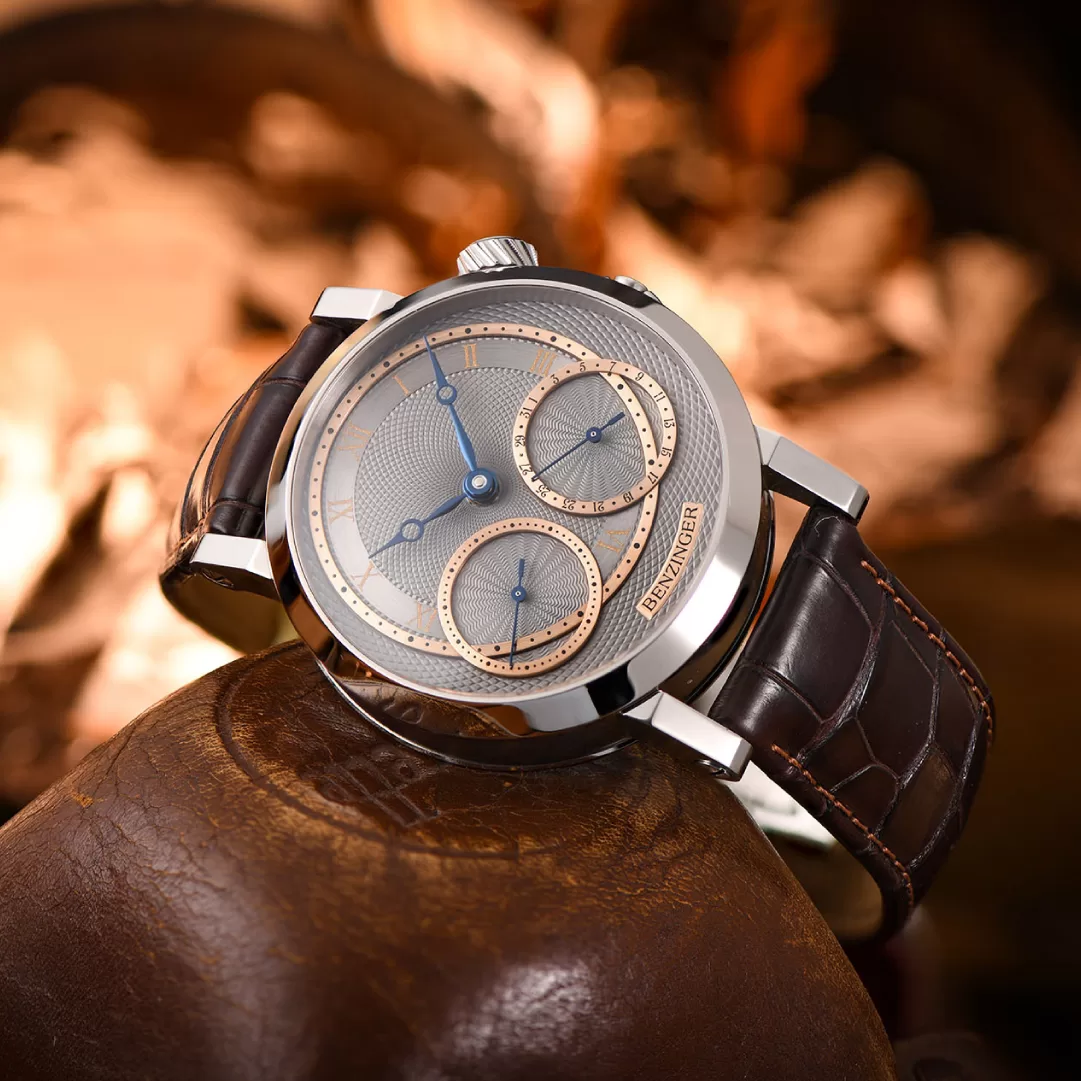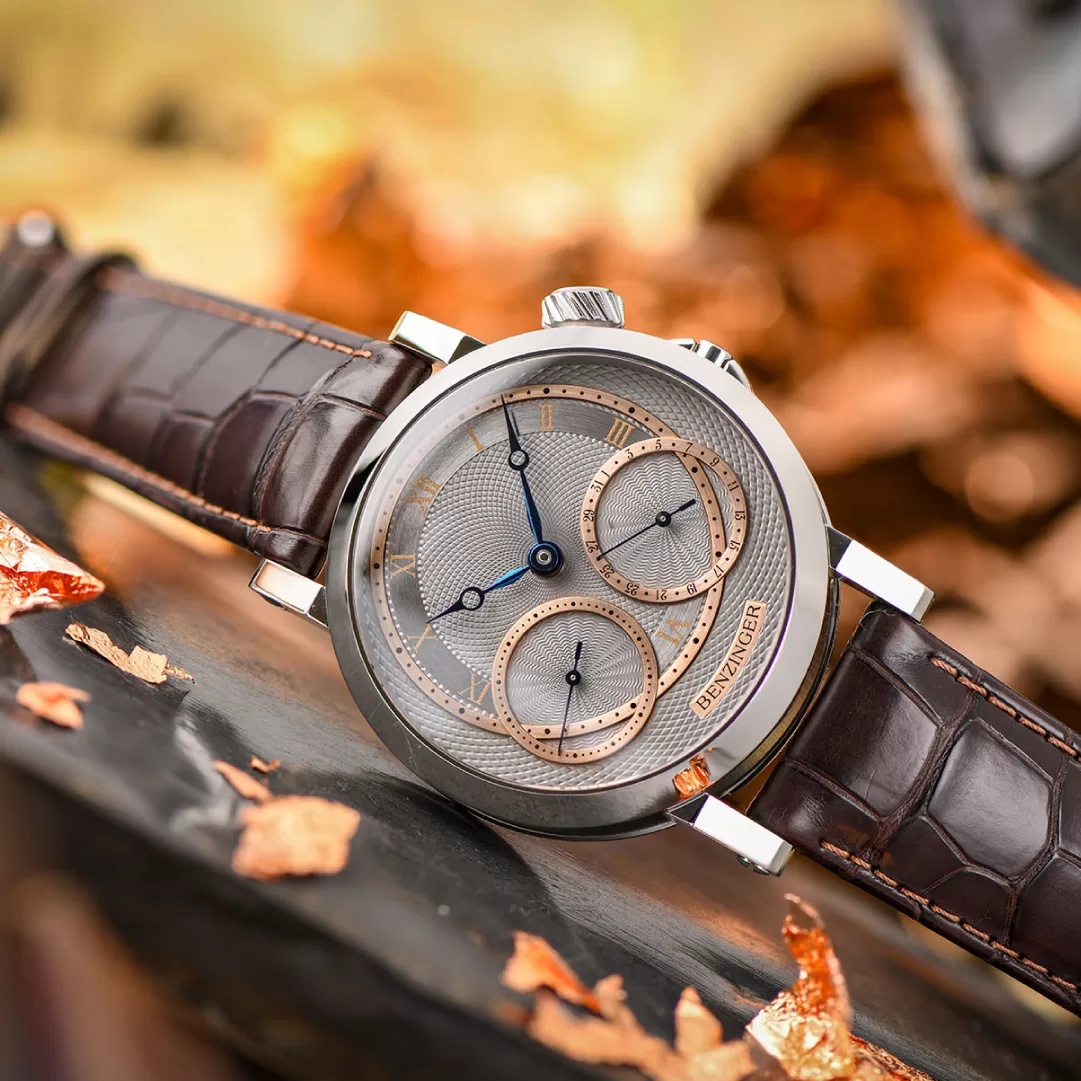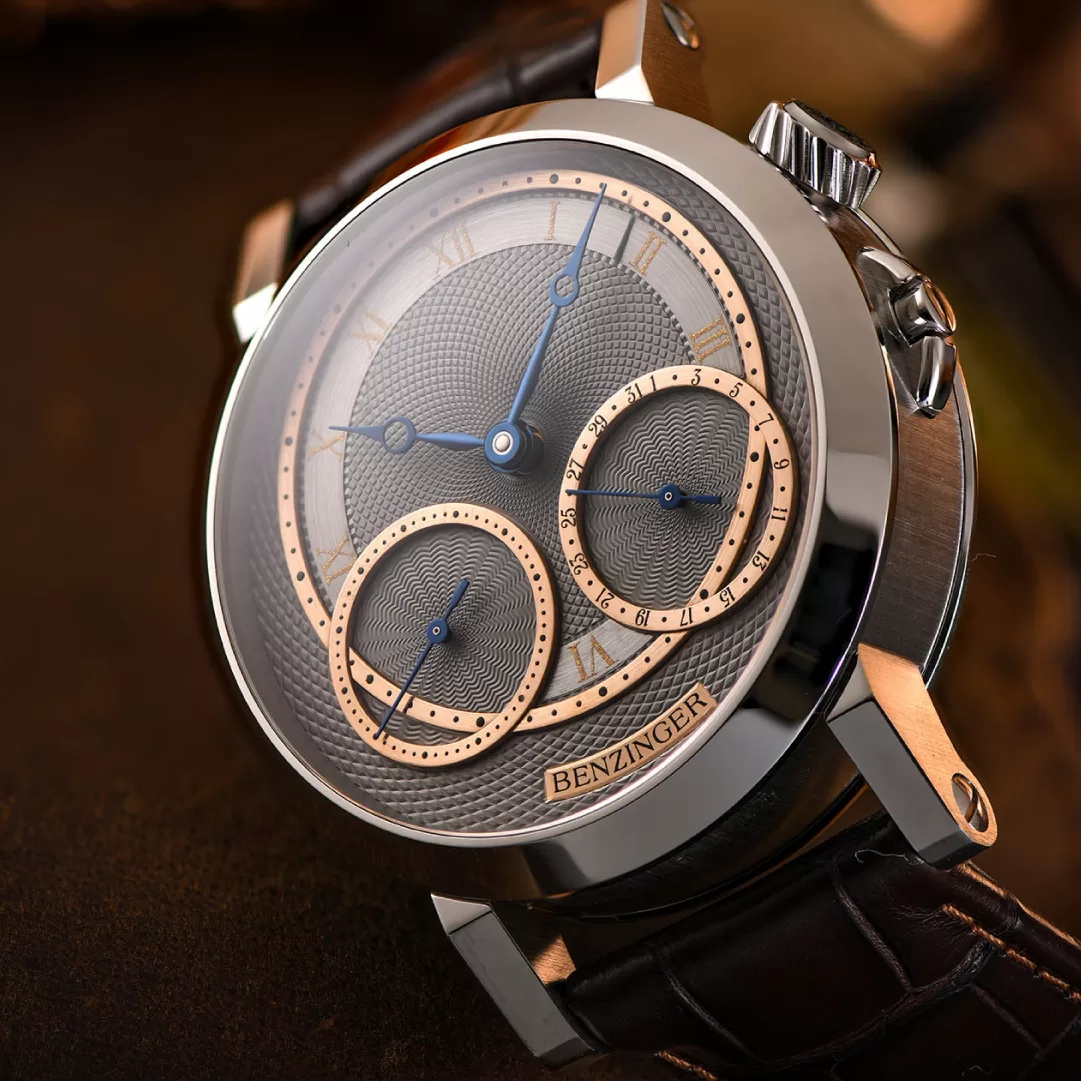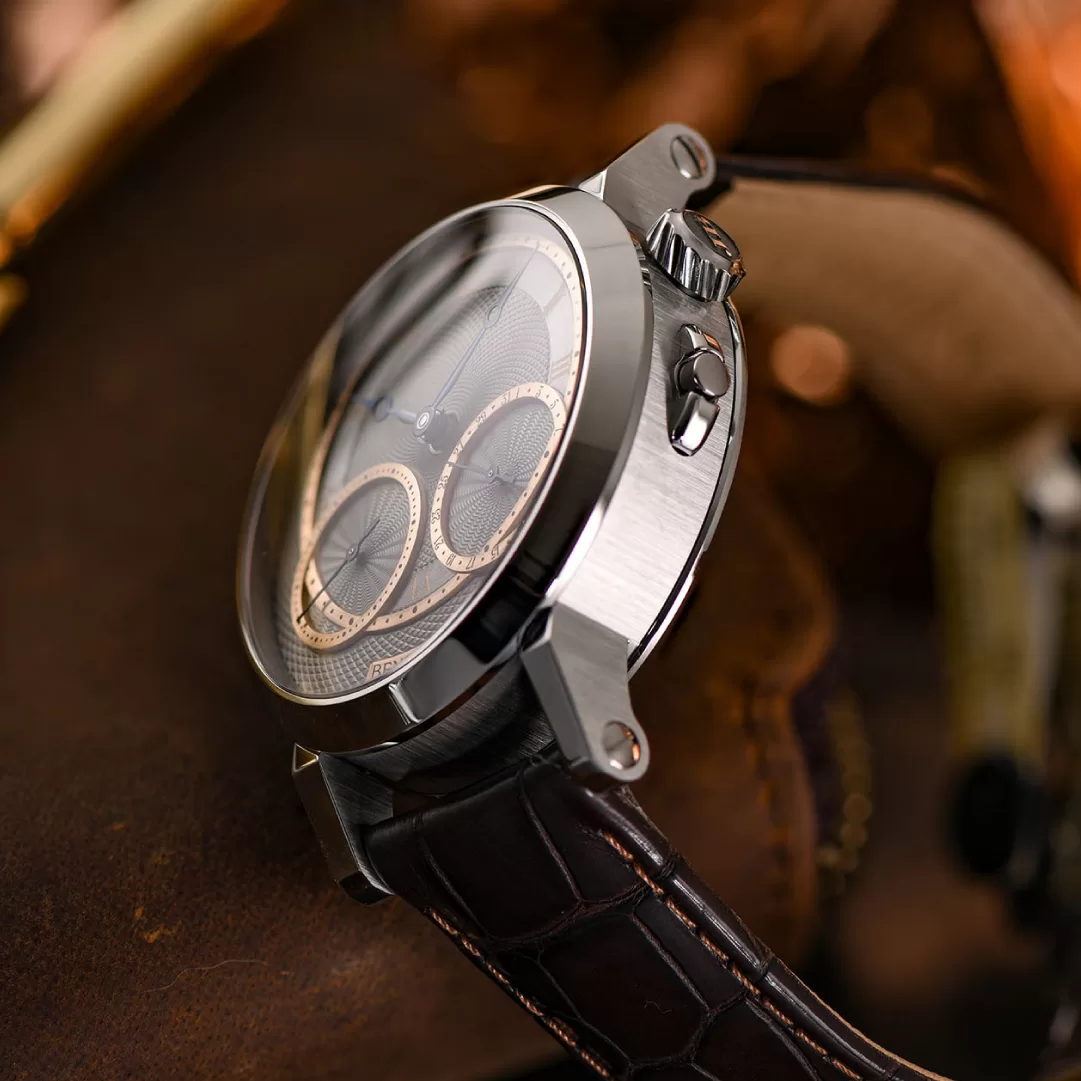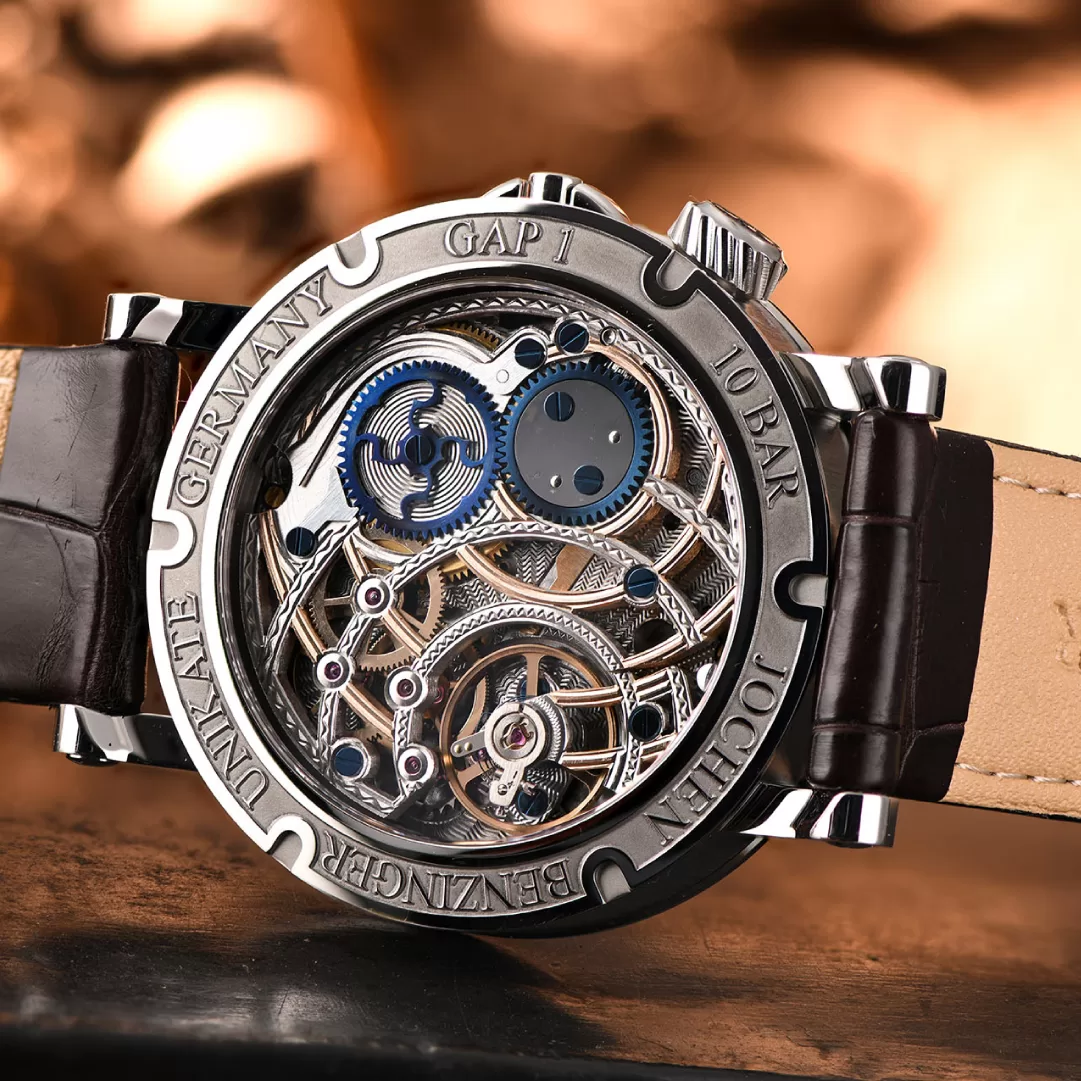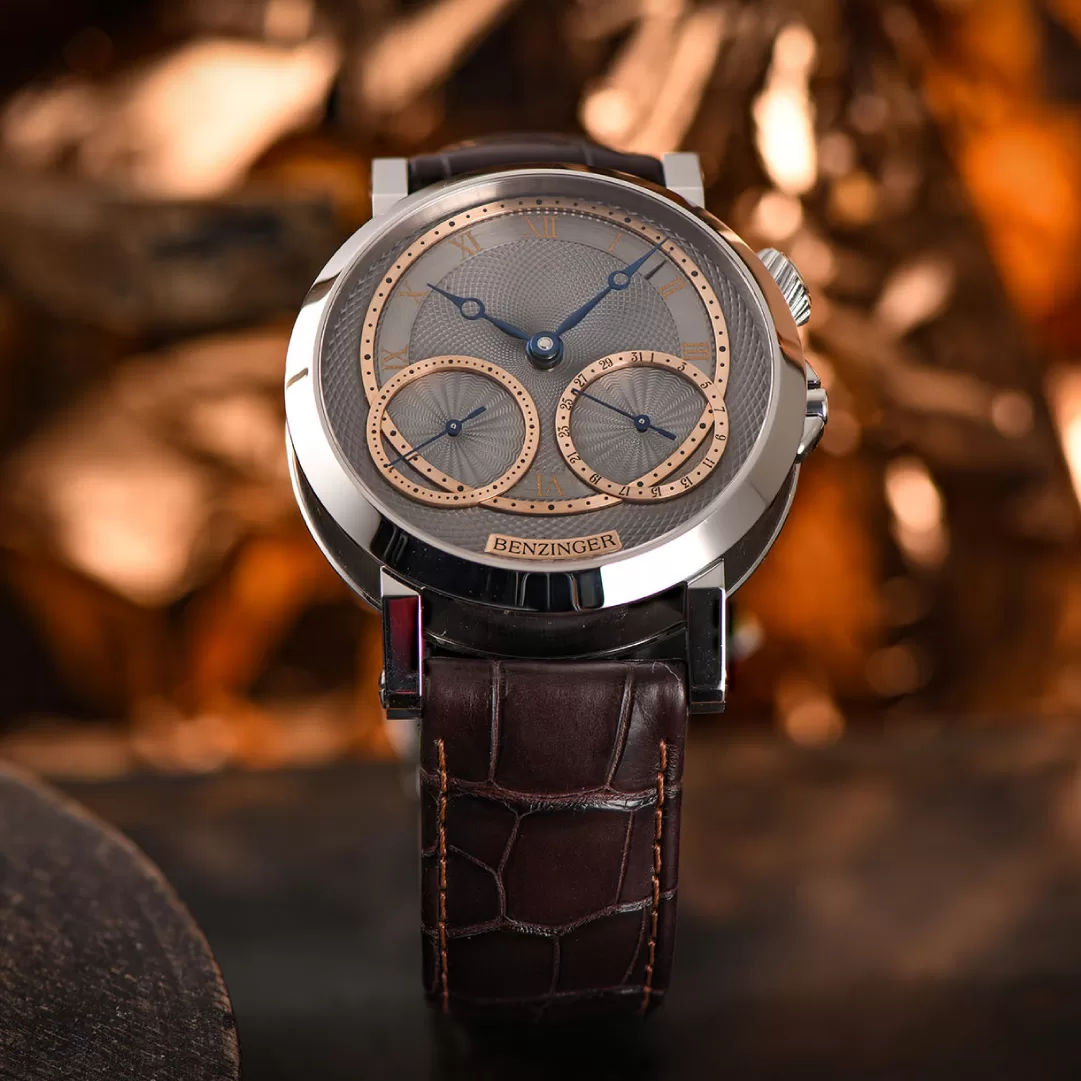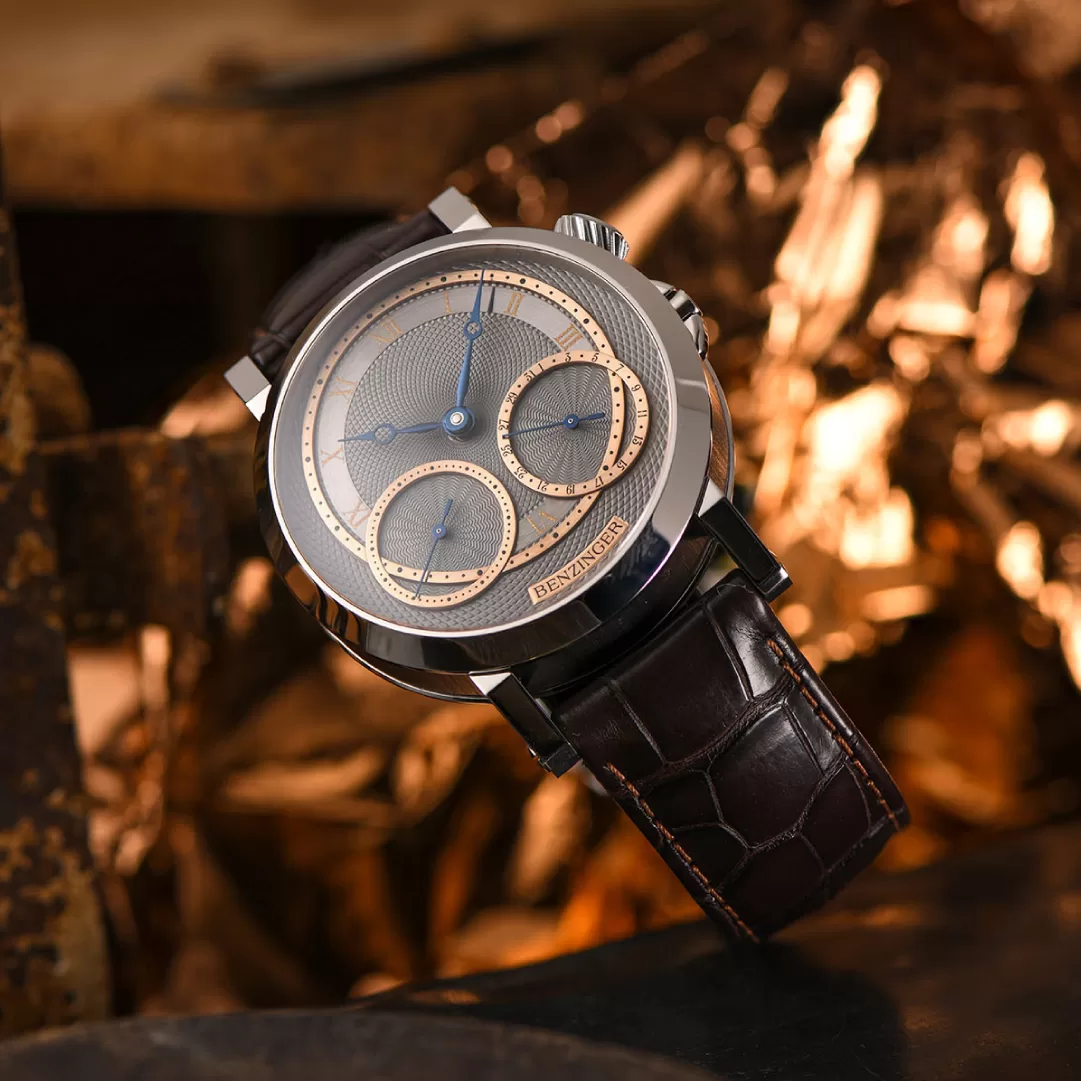Description
Benzinger GAP 1 – Graphite
GAP 1 presents Jochen Benzinger’s first manufactory movement, realizing a long-cherished dream and substantial achievement for this exclusive, micro brand.
The hand-wound movement inside the GAP 1 was specially designed for this striking collection, resulting from a collaboration between renowned watchmakers Habring2 and master ennobler, Jochen Benzinger. The unusual name of the collection is directly derived from this illustrious pairing and marks a small revolution at Benzinger.
To date, Manual winding movements from the Swiss manufacturer ETA have been used almost exclusively in Benzinger timepieces. Traditionally, Jochen took these Swiss movements as a starting point and then technically rebuilt and refined them in his signature BENZINGER style. As such, the realization of the GAP 1, which features a manufactory movement, is breaking new ground. Together with the Austrian watch manufacturer Habring2, the special hand-wound movement was developed according to Benzinger’s specifications and built especially for him. GAP stands for nothing more than German Austrian Partnership – a straightforward and proud announcement of collaboration.
Subtle elegance… Housed in a 39 mm, steel case, this timepiece is streamlined and compact, well-suited to slimmer wrist sizes. In contrast to the usual opulently designed movement, the stainless steel case manufactured in Pforzheim is functional, minimalist and straightforward. On the slightly broader edge of the watch back there is an elaborate 3D engraving, as well as on the diagonally fluted crown with the company signature ‘JB’, that is atypically positioned at 2 o’clock. The date pusher is thoughtfully framed by a protective cover at 3 o’clock, enhancing robustness and security.
The ticking heart… The GAP 1 movement is a hand-wound manufactory calibre. At 28,800 oscillations per hour, the power reserve delivers an enduring 48 hours. Outstanding are special features such as a tangential screw fine regulation for good accuracy and the KIF shock absorber, which protects the GAP 1 from external influences. It goes without saying that the movement is once again guilloched and skeletonized by hand, has flame-blued wheels and gold-plated movement parts, making it instantly recognisable as a BENZINGER creation.
The GAP 1 retains a simplicity in the design of the dial. The main dial, which shows hour and minute, does not cover the entire space. Slightly shifted towards 12 o’clock, it gives the small second at 8 o’clock and the date display at 4 o’clock enough space to be clearly readable. The Breguet-style hands afford excellent contrast to the dial and sub-dials. The overall result is one of refined elegance and classic beauty.
Enjoy the subtlety and charm of this colour palette and exquisite dial finish which offsets the unique design of Benzinger’s Gap 1 Graphite model.
Technical Specifications
Case:
High-grade steel case made in Pforzheim, with 3-D-engraving
Crown at 2 o’clock
Pusher for date correction at 3 o’clock
Diameter of 39 mm, height of 11.5 mm
Sapphire glass case front and exhibition case back
Movement:
In-house manufactory, hand-winding movement, off-centre hour and minute indication
Small second at 8 o’clock, date indication at 4 o’clock
Diameter of 30 mm, height of 5.1 mm
28,800 vibrations per hour (4Hz)
48 hours power reserve
Tangential screw fine regulation
Carl Haas sprung balance set to chronometer accuracy
KIF shock absorber acc. to DIN and NIHS
19 jewels
Dial:
Black Rhodium plated, hand guilloched dial with rose gold chapter rings.
Hour and minute indication, slightly shifted towards 12 o’clock
Hands:
Flame-blued steel hands in Breguet-style
Strap:
Hand-sewn genuine leather strap
Folding clasp / pin buckle
Screwed-in strap lugs
What is the art of Guilloche?
Guilloché (or guilloche) is a decorative technique whereby a very precise, intricate and repetitive pattern is mechanically engraved into an underlying material. It was developed between the 1600-1700s as part of the “royal craft” of art-reversing. From these princely beginnings, the watchmakers of the 18th and 19th century developed the beautiful Guilloche machines, with which, for example, Breguet cut its unique dials. At the beginning of the twentieth century, the court jeweller of the Russian Tsar, Fabergé, brought the art of Guilloche to its fullest perfection. He used the guilloche technique as a base for his famous enamel work, which culminated in the renowned Fabergé eggs. Today, thanks to the renaissance of mechanical clocks and watches, a limited number of high-quality manufacturers are still offering their products with hand-guilloched dials, which are still unmatched in their classic appearance. Jochen Benzinger is a master in this field.
What is the art of engraving?
Engraving is as old as mankind itself. People used cutting tools at all times to decorate jewellery and utensils. The engraving art in Europe in the fifteenth and sixteenth centuries reached its climax when armour and weapons were artfully engraved. In the sixteenth century, Albrecht Dürer brought this work to a new heyday when, using the same tools as Jochen Benzinger uses in his studio today, he cut the copper-printing blocks for his famous prints. Nowadays there are very few specialists who know the techniques of this craft. Hand-engraving in horology is a highly valued attribute on any timepiece. Benzinger watches feature this finish with flourish and skill.
What is the art of skeletonising?
Skeletonising is a refinement method for giving a new, individual character to closed movements. Parts of the movement are removed by a goldsmith’s saw to reveal the direct view into and through the mechanical movement. The view of the movement is made possible by a sapphire crystal, exhibition case back in all models. The imbued creative energy of Jochen Benzinger is brought to the fore in his bespoke skeletonising creations. Each piece is skilfully crafted to highlight the beauty of the mechanical movement beating within – a pleasure to observe and a privilege to wear.
